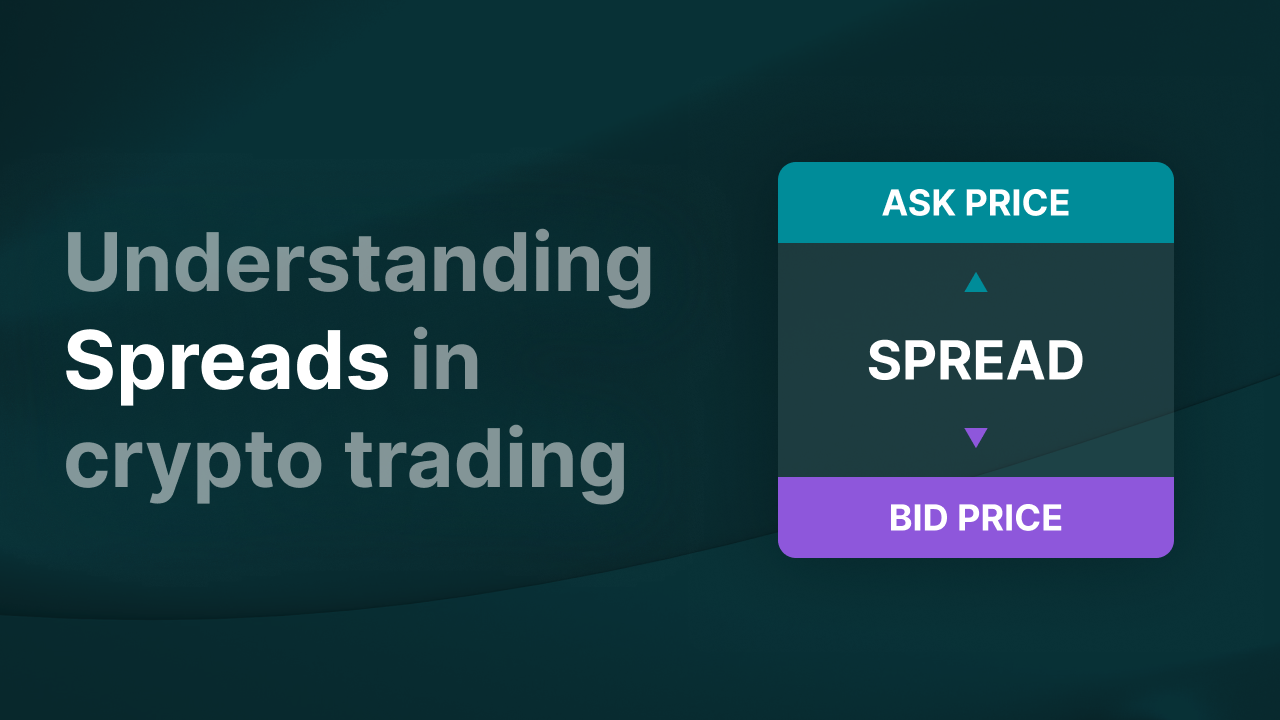Spreads en el trading de criptomonedas: una guía completa

¿Qué es un spread en el trading de criptomonedas?
Un spread en el trading de criptomonedas es la diferencia entre el precio de compra (bid) y el precio de venta (ask) de una criptomoneda. El precio de compra es el máximo que un comprador está dispuesto a pagar, y el precio de venta es el mínimo que un vendedor está dispuesto a aceptar. Esta diferencia representa un coste importante al ejecutar una operación y es un factor clave en la rentabilidad en los mercados financieros y de criptomonedas.
Ejemplo:
Supongamos que desea comprar Bitcoin (BTC).
- El precio de compra es 29.950 €
- El precio de venta es 30.000 €
La diferencia es el spread:
30.000 € - 29.950 € = 50 €
Esto significa que desde el momento en que compra, ya comienza con una "pérdida" de 50 € por Bitcoin. Si lo vendiera inmediatamente, perdería esa cantidad solo por el spread, sin contar las comisiones de transacción.
Puntos clave
- Un spread es la diferencia entre el precio de compra (bid) y el precio de venta (ask) de una criptomoneda. Representa un coste fundamental en el trading.
- Existen varios tipos de spreads: spread bid-ask, spread porcentual, spread fijo y spread variable que cambia con la volatilidad del mercado.
- Cuanto menor sea el spread, menores serán los costes de trading, algo crucial para los operadores activos.
- Los spreads están influenciados por la liquidez, la volatilidad, las comisiones de la plataforma, los eventos macroeconómicos y la actividad de los market makers.
- Un spread amplio puede indicar poca liquidez o mercados inestables, lo que implica costes de entrada más altos y slippage.
- Es posible reducir los costes del spread mediante órdenes limitadas, operando en horas pico y eligiendo criptomonedas populares.
Tipos de spread en el trading de criptomonedas
-
Spread bid-ask: El tipo más común, que representa la diferencia entre el precio más alto que ofrece un comprador y el precio más bajo que exige un vendedor.
Por ejemplo, si Bitcoin tiene un precio de compra de 30.000 € y uno de venta de 30.050 €, el spread es de 50 €. -
Spread porcentual: Expresa el spread como un porcentaje del precio de venta. Por ejemplo, si el spread en Ethereum es de 10 € y el precio de venta es de 2.000 €, el spread porcentual sería (10/2000) × 100 = 0,5 %.
-
Spread variable: Cambia según las condiciones del mercado. Se amplía en épocas de alta volatilidad y se reduce en mercados estables. Depende de la oferta, la demanda, la liquidez y la volatilidad.
-
Spread fijo: Algunas plataformas establecen el spread con antelación, sin variaciones en función del mercado. Es más predecible, pero puede ser más alto en mercados tranquilos.
¿Cómo afectan los spreads al trading de criptomonedas?
Los spreads influyen directamente en los costes y estrategias de trading:
-
Costes de trading: El spread representa el coste de abrir y cerrar una posición. Un spread mayor implica mayores costes de trading y puede reducir las ganancias, especialmente para los traders activos.
-
Indicador de liquidez: Un spread pequeño suele indicar un mercado líquido con alta actividad y poco impacto en los precios al operar. Un spread amplio, por el contrario, puede señalar baja liquidez y mayor volatilidad.
-
Impacto en la ejecución de órdenes: En mercados volátiles, los spreads se amplían, y su orden puede ejecutarse a un precio menos favorable. Este fenómeno se conoce como slippage.
Factores que influyen en los spreads del mercado cripto
Diversos elementos afectan la amplitud del spread:
-
Liquidez del mercado: Mercados líquidos con alto volumen de operaciones suelen presentar spreads más ajustados. Las criptomonedas como Bitcoin o Ethereum normalmente tienen spreads más bajos que los altcoins menos conocidos.
-
Volatilidad: Los movimientos bruscos de precio hacen que los spreads se amplíen, ya que los operadores buscan protegerse contra riesgos de cambios repentinos.
-
Eventos macroeconómicos: Decisiones como cambios en los tipos de interés por parte de bancos centrales pueden hacer que los spreads se disparen.
-
Comisiones de plataforma: Las plataformas aplican diferentes estructuras de comisiones. Algunas incluyen los costes en el spread, otras los cobran por separado. En Finst no cobramos spread y nunca operamos en contra de nuestros clientes, lo que garantiza que nuestros intereses están alineados con los suyos.
-
Actividad de los market makers: Los market makers proporcionan liquidez constante comprando y vendiendo activos, lo cual ayuda a mantener los spreads ajustados.
Estrategias para gestionar los spreads
Estas son algunas recomendaciones para reducir el impacto de los spreads:
-
Elija la plataforma adecuada: Cada exchange ofrece diferentes spreads según su liquidez, estructura de comisiones y actividad de market makers. Investigue y opte por una plataforma con spreads competitivos.
-
Revise el libro de órdenes: El libro de órdenes de un exchange muestra la liquidez del mercado. Muchos órdenes cercanas indican buen volumen y spreads bajos; grandes huecos señalan lo contrario.
-
Siga el estado del mercado: Manténgase informado sobre las condiciones del mercado. Evite operar durante eventos importantes o periodos de alta volatilidad si desea minimizar los costes.
-
Utilice órdenes limitadas: Las órdenes limitadas le permiten establecer el precio exacto al que desea comprar o vender, lo que puede ayudarle a evitar spreads amplios.
-
Opere en horas pico: Los spreads suelen ser más bajos durante los momentos de mayor actividad, como cuando los mercados europeos y estadounidenses están abiertos al mismo tiempo.
-
Elija criptomonedas populares: Operar con criptos ampliamente demandadas como Bitcoin o Ethereum suele implicar spreads más bajos, reduciendo así sus costes de trading.
Reflexión final
Comprender cómo funcionan los spreads en el trading de criptomonedas es fundamental para optimizar las ganancias y reducir los costes. Al conocer los factores que los afectan y aplicar estrategias adecuadas, los traders pueden tomar decisiones más informadas. Tanto si está comenzando como si ya tiene experiencia, vigilar los spreads y ajustar su estrategia a las condiciones del mercado le ayudará a operar de forma más eficaz en el entorno dinámico de las criptomonedas.




